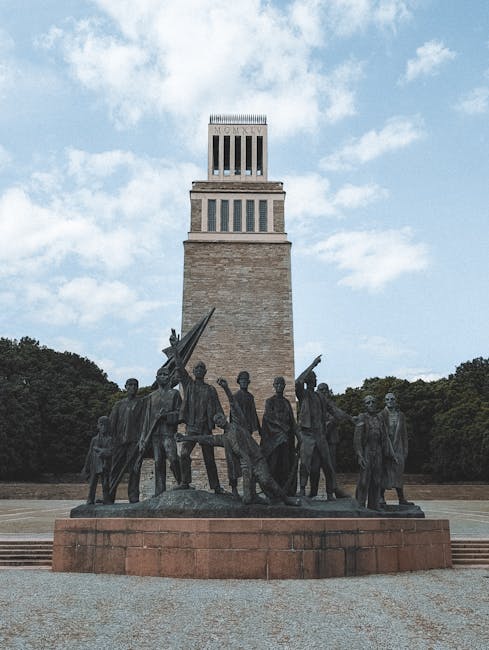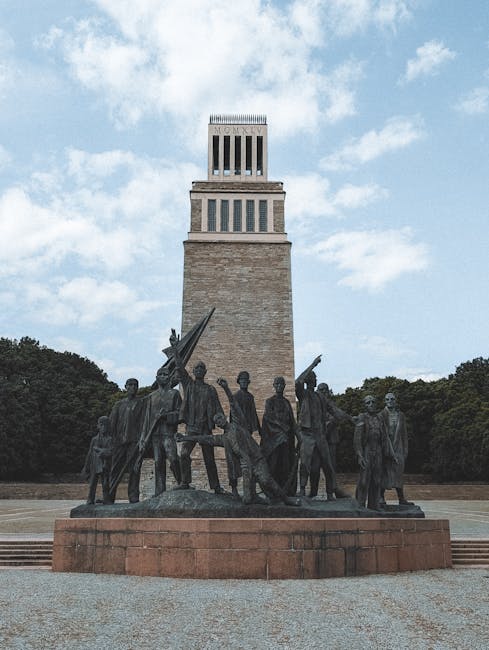Memorial Parks: Finding Peace, Remembrance, and Beauty in Dedicated Spaces
Memorial parks serve as much more than just burial grounds; they are sanctuaries of remembrance, offering solace, beauty, and a place for families and loved ones to connect with the departed. These thoughtfully designed spaces provide a tranquil setting for reflection, honoring the lives of those who have passed while offering a sense of peace and continuity for the living. This comprehensive guide explores the multifaceted world of memorial parks, delving into their history, design, services offered, and the important considerations when choosing a final resting place for yourself or a loved one.

A Brief History of Memorial Parks
The concept of dedicated burial grounds dates back centuries, evolving from simple cemeteries to the meticulously landscaped memorial parks we see today. Early cemeteries were often situated near churches or town centers, reflecting the religious and community significance of death and burial. However, the rise of urbanization and changing societal attitudes towards death led to the development of more aesthetically pleasing and thoughtfully planned memorial parks in the late 19th and early 20th centuries. The focus shifted from stark practicality to creating serene and contemplative environments, incorporating elements of nature and landscape architecture to foster a sense of peace and beauty.
The Rise of the Modern Memorial Park
Modern memorial parks often incorporate a variety of features designed to enhance the visitor experience. These may include meticulously manicured lawns, flowering gardens, walking paths, water features, sculptures, and even chapels or reflection areas. The aim is to create a space that is both aesthetically pleasing and emotionally supportive, providing comfort and solace to those who grieve.
Types of Memorial Parks
Memorial parks offer a diverse range of burial options to cater to individual preferences and beliefs. These options may include:

- Traditional Ground Burial: The most common method, involving the interment of a casket in the ground.
- Cremation Burial: The interment of cremated remains in a designated area, often within a niche in a columbarium or scattered in a designated scattering garden.
- Above-Ground Burial: Mausoleums provide above-ground burial options in private or shared spaces, offering protection from the elements and a more permanent memorial.
- Memorial Gardens: Dedicated areas for the placement of memorials, such as headstones or benches, in a landscaped setting.
- Scattering Gardens: Designated areas for the scattering of cremated remains, often with beautiful landscaping and contemplative features.
Choosing the Right Memorial Park
Selecting a memorial park is a significant decision, often made during a time of grief and emotional vulnerability. Several factors should be considered:
- Location and Accessibility: Proximity to family and friends is a key consideration, ensuring easy access for visitation and ongoing remembrance.
- Park Atmosphere and Aesthetics: The overall ambiance of the park should reflect personal preferences and offer a sense of peace and tranquility.
- Burial Options: Consider the available burial options and their compatibility with personal beliefs and preferences.
- Services Offered: Many parks offer various services, including grief counseling, memorial planning, and ongoing maintenance.
- Cost and Payment Options: Burial costs can vary significantly; it’s essential to understand the pricing structure and available payment plans.
- Perpetual Care: Ensure the park provides perpetual care for the grounds and burial sites, guaranteeing long-term upkeep and maintenance.
- Endowment Care: Some parks offer endowment care which helps secure long-term funding for the maintenance and upkeep of the park.
Beyond Burial: Memorial Parks as Community Spaces
Many modern memorial parks are designed to be more than just burial grounds; they’re evolving into community spaces that offer a variety of amenities and services for the living. Some may include walking trails, picnic areas, community gardens, or even educational programs about local history and ecology. These features transform the park into a place of not only remembrance but also relaxation, connection, and appreciation for nature.
The Importance of Memorialization
Memorial parks play a vital role in the process of grief and remembrance. They provide a tangible place for families and friends to gather, to honor the lives of their loved ones, and to celebrate their memories. The physical presence of a grave or memorial serves as a constant reminder of the departed, offering a sense of continuity and peace in the face of loss. The opportunity to personalize a gravesite through headstones, inscriptions, and plantings allows for a unique and deeply personal expression of remembrance.
Planning Ahead: Pre-Need Arrangements
Planning for end-of-life arrangements can provide peace of mind for both the individual and their family. Pre-need arrangements allow individuals to choose their final resting place, specify their burial preferences, and secure the cost of their burial in advance, protecting their loved ones from financial burden during a difficult time. Many memorial parks offer pre-need planning services, allowing families to discuss options, make informed decisions, and create a personalized plan that aligns with their wishes and values.
Memorial Parks and Sustainability
Increasingly, memorial parks are adopting sustainable practices to minimize their environmental impact. This includes using native plants, conserving water resources, implementing eco-friendly maintenance techniques, and promoting biodiversity within the park’s landscape. These efforts reflect a growing awareness of the importance of environmental stewardship and a desire to create spaces that are both beautiful and environmentally responsible.
Finding a Memorial Park Near You
Numerous resources are available to help you locate memorial parks in your area. Online search engines, funeral home websites, and local directories can provide comprehensive lists of parks, along with their services and contact information. Visiting potential parks in person is highly recommended to assess the atmosphere, services, and overall suitability for your needs.
In conclusion, memorial parks are evolving spaces that go beyond simple burial grounds. They serve as sanctuaries of remembrance, providing a tranquil setting for reflection, solace, and connection with loved ones who have passed. Understanding the different types of memorial parks and carefully considering the factors discussed in this guide will help you find the perfect resting place for yourself or a loved one, ensuring a fitting tribute to a life lived.


